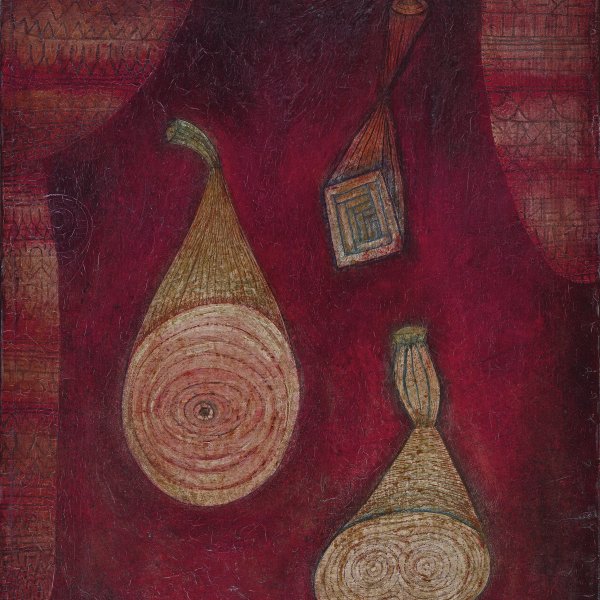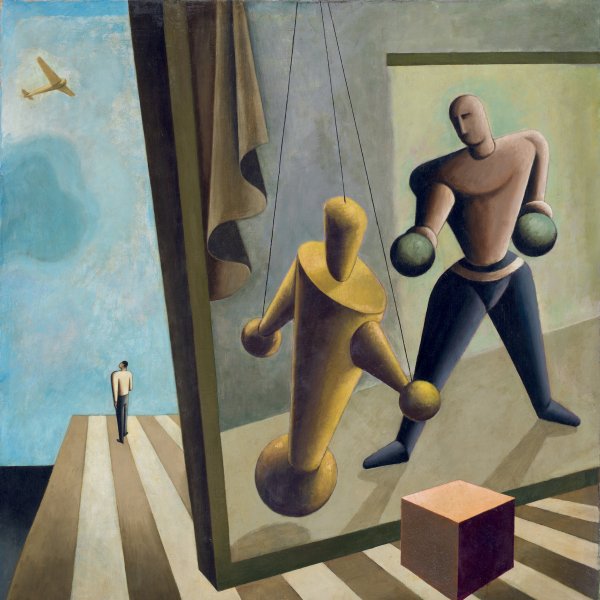Baccarat Game
ca. 1928 - 1929
Oil on canvas.
67.6 x 82.2 cm
Museo Nacional Thyssen-Bornemisza, Madrid
Inv. no.
598
(1979.79
)
Not on display
Level 2
Permanent Collection
Level 1
Permanent Collection
Level 0
Carmen Thyssen Collection and Temporary exhibition rooms
Level -1
Temporary exhibition rooms, Conference room and EducaThyssen workshop
The Hungarian painter Vilmos Huszár, who settled in The Hague in 1906, was not only one of the main founders of the Dutch De Stijl group but also created the woodcut for the cover of the first issue of the group’s magazine. His intriguing design, which some scholars interpret as two intertwined profiles, already evidenced his shift towards the geometric abstraction of natural forms, which greatly influenced the creation of Neo-Plasticism. At the same time the artist was working on an experimental shadow puppet theatre, Mechanische Dansfiguur (Mechanical Dancer), which was first shown in 1920. The dancer, who adopted various poses by means of a mechanical device, combined aspects of folk art and the primitivism of the shadow theatre of the island of Java with the Futurists’ notions of movement, Schlemmer’s mechanisation of the human body and the Non-Objective figuration of De Stijl.
Although the present work is referred to in most publications as Baccarat Players (Baccaratspelers), when it was sold to its first owner, Cornelius Bruynzeel, in 1934 it bore the title Baccarat Game (Baccaratspel), the name by which Christopher Green suggests it should be called. By the time Huszár started on it in 1928, he had already left De Stijl, and his new aesthetic ideas were centred on combining figuration and abstraction. As can be appreciated, the players have been reduced to semi-abstract, flat geometric forms and the entire composition is organised around the typical green baize, which is arranged in parallel to the plane of the canvas.
Paloma Alarcó
Although the present work is referred to in most publications as Baccarat Players (Baccaratspelers), when it was sold to its first owner, Cornelius Bruynzeel, in 1934 it bore the title Baccarat Game (Baccaratspel), the name by which Christopher Green suggests it should be called. By the time Huszár started on it in 1928, he had already left De Stijl, and his new aesthetic ideas were centred on combining figuration and abstraction. As can be appreciated, the players have been reduced to semi-abstract, flat geometric forms and the entire composition is organised around the typical green baize, which is arranged in parallel to the plane of the canvas.
Paloma Alarcó









